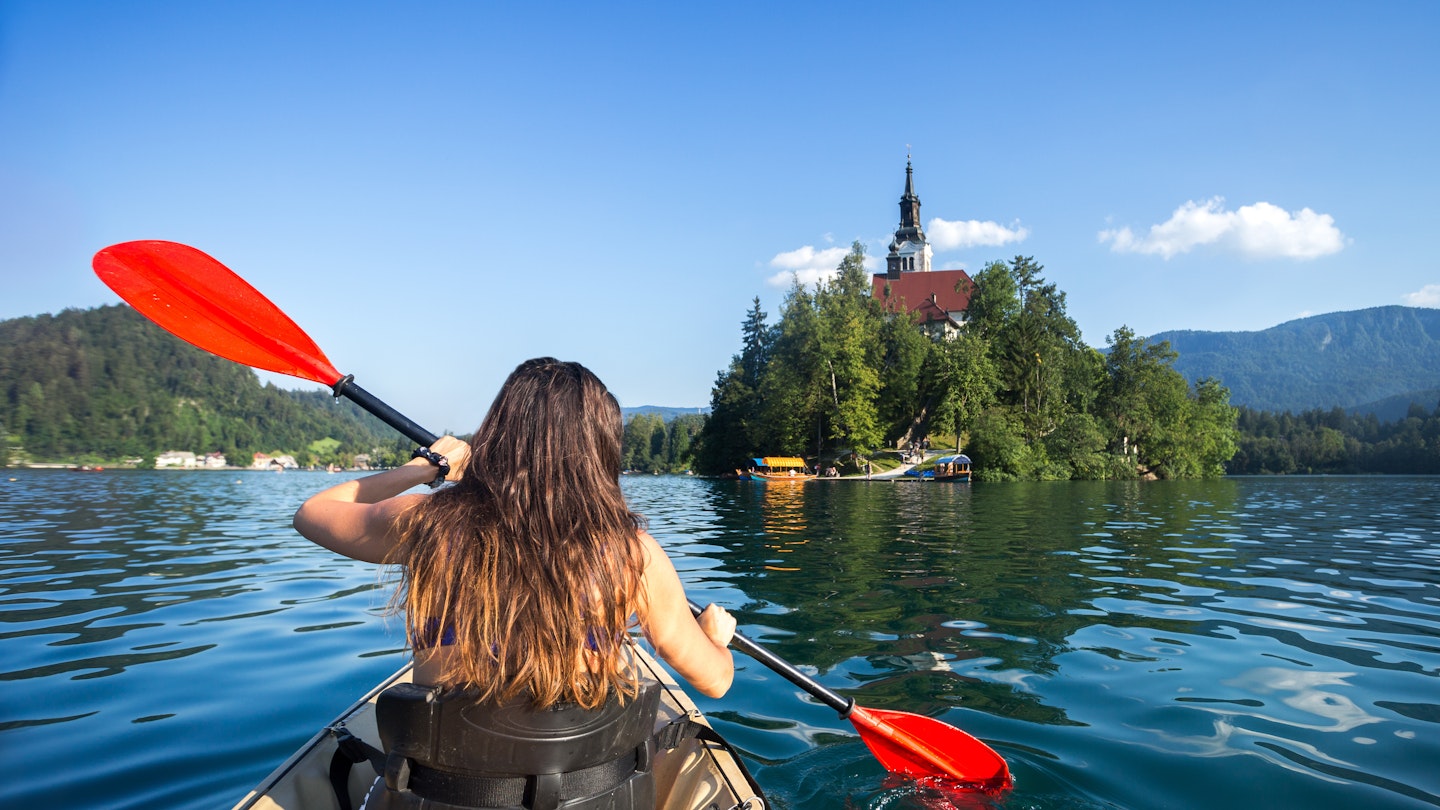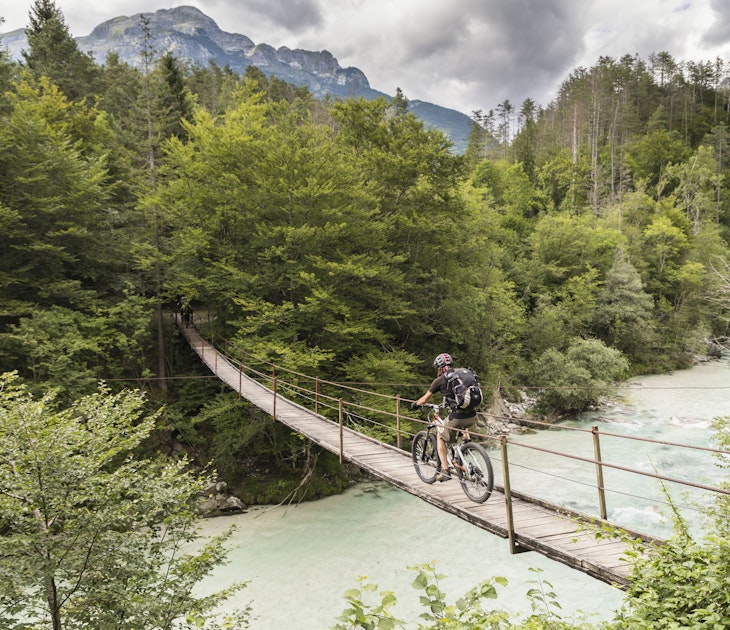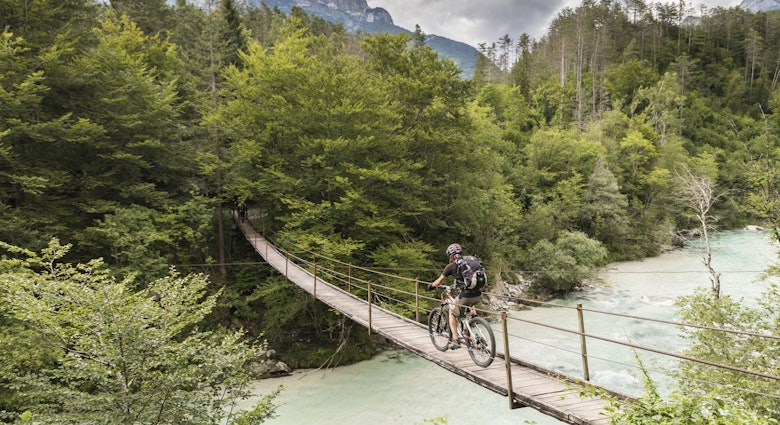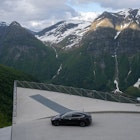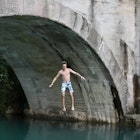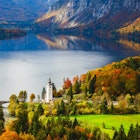For proof of the idiom “good things come in small packages,” one only needs to visit Slovenia. In an area about half the size of Switzerland, this Central European country packs in mountain ranges, an Adriatic coastline, fashionable cities, rivers, lakes and perched villages.
Better still, the country, which takes pride in its avant-garde sustainable-tourism philosophy, is actually all the easier to take in because of its compact nature. In one day, travelers can easily walk in the Alps, kayak a glacial waterway, drive to one of several world-class winemaking regions, and then take a dip in the sea. At the moment, you may not be able to name multiple Slovenian cities, regions or landmarks, but that’s a positive. Slovenia — hiding in plain sight — is waiting to be discovered.

See spectacular architecture in Ljubljana
All roads in Slovenia lead to its capital, and not just because it’s situated in the center of the country. Named the European Green Capital in 2016, this city of nearly 300,000 is a nexus buzzing with active, cycle-riding residents, alternative culture and eclectic restaurants, museums and cafes. However, the setting alone is worth a visit: Every square has a story told in a language of historical epochs and stunning architecture.
Start your investigation of Slovenia’s biggest city at the fairytale-like Ljubljana Castle, a 16th-century hilltop fortification. Either make the short, inclined trek along a clearly marked footpath or take the funicular. Once there, check out a range of attractions, such as the Museum of Puppetry or the Exhibition of Slovenian History. Back down in the Old Town you will, in rapid succession, come across the baroque Cathedral of St Nicholas, built on 13th-century foundations; the main square, Prešernov Trg, and its bright-pink 17th-century Franciscan Church of the Annunciation; and a series of bridges straddling the Ljubljanica River.
Although all of the river crossings are unique, the Triple Bridge, designed by local superhero architect Jože Plečnik, stands out. Take a closer look, and you’ll realize just how many of the city’s architectural gems were the product of Plečnik’s brilliance during the first half of the 20th century. Don’t leave Ljubljana without admiring his National & University Library or taking a guided tour of Plečnik House, his home and studio for more than 35 years.
Peel back layers of history in Maribor
The truth is, Maribor could fit into several “best of” categories. Slovenia’s second largest city, it anchors the country's Podravska wine region, and it also has a thriving gourmet scene, including the Michelin-starred restaurant Hiša Denk, about nine miles north of the center. Plus, because it sits on the Drava River, it's a hub for adventure activities like rafting, cycling and hiking. But all that said, Maribor is, at its heart, a treasure chest of historic layers.
Settled time and again during the Stone Age, Celtic period and Roman era, the city dates back to the Middle Ages, with a plethora of sites for history buffs. First, stop in at Maribor Regional Museum to get an overview, then walk just north of town to visit the remains of the 12th-century castle known today as Piramida. Back in the center is Glavni Trg, which was the market square during the medieval period. Here, you’ll see the 16th-century Town Hall before sitting for a glass of wine at the Old Vine House, where the world’s oldest producing vine — more than 400 years old — climbs the facade and still produces vino.

Plan for outdoor adventure in Bovec
At the edge of Triglav National Park, squeezed between the Julian Alps and the crystal-clear turquoise Soča River, Bovec is a haven for nearly any mountain or water activity imaginable. There is a holiday’s worth of sites surrounding the country’s adventure capital, and by enjoying them, you can scratch both your adrenaline- and culture-seeking itches.
Start your journey by cycling approximately 7km (4.3 miles) southwest of Bovec, along the Soča River, to the Boka Waterfall, Slovenia’s highest falls. Then head in the other direction: you'll pedal next to the Koritnica River for 4.5km (2.8 miles) until you reach Kluže Fortress, a 15th-century wooden fort that was upgraded to a stone version, wedged between peaks and gorges, in the 18th century. Make sure to take in the exhibition describing the area’s importance along the front lines of World War I.
Jump to the next excitement level and explore the area’s extremes. Start with an advanced kayak session by paddling both the Soča and Koritnica Rivers (a permit is needed). Then take a gondola ride to Kanin Ski Centre, the country’s highest ski area at around 2300m (7546ft).
Have a romantic holiday at Lake Bled
Whether you know it or not, you’ve likely seen Lake Bled before. The tectonic glacial lake and its island church — floating on the still water as if placed there centuries ago to fulfill future photographers’ dreams — is perhaps Slovenia’s most iconic image, and the cover shot of many articles and guidebooks. The logical reason for this is clear the moment you see it: Even in two dimensions, this magical place pulls at your heartstrings and touches emotions you were unprepared to confront. When you see it in person with that special someone by your side, get ready for fireworks.
Luckily, there is ample opportunity to stroll or float hand-in-hand in this snowglobe-worthy setting. Start with a boat ride to Bled Island, where churches have been built and rebuilt for more than a millennium; today’s structure is the 17th-century baroque Church of the Assumption. Vows renewed, head to Bled Castle, which rests on a bluff overlooking the lake. Dating from the early 11th century, the fortress was rebuilt after an earthquake in the 16th century. No romantic outing here is complete without an easy hike to Vintgar Gorge, around 4km (2.5 miles) from the town of Bled. Boardwalks and bridges take lovers (and anyone else) on an intimate journey across the magical 1600m (5249ft) ravine.
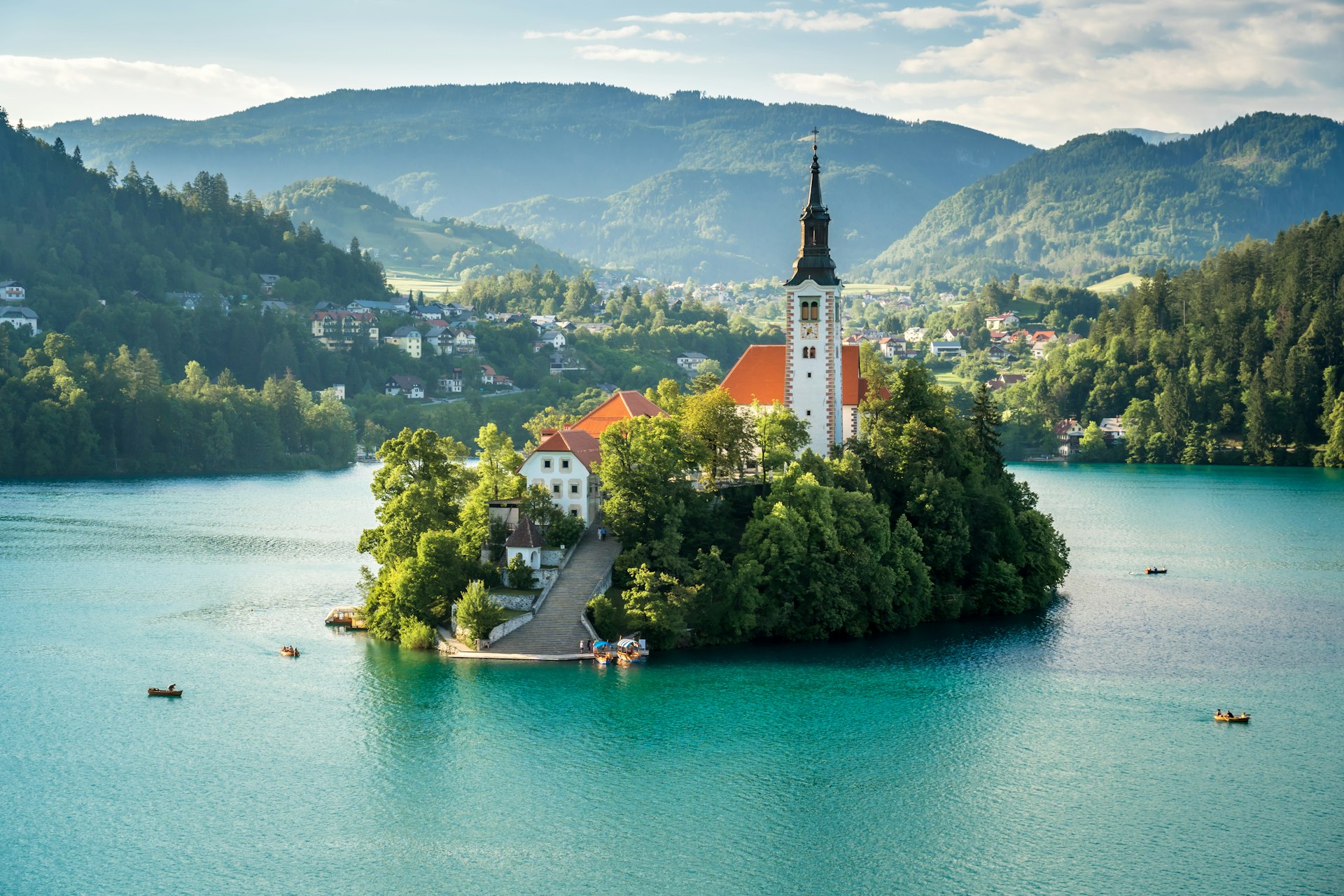
Experience local culture at Lake Bohinj
Though small, Slovenia has a surprising amount of regionality, and every area exudes pride about the characteristics that make it unique. When visiting Lake Bohinj — the country’s largest natural lake, tucked into the Julian Alps in Triglav National Park — you will find a community that takes every opportunity to share the authenticity of their beloved landscape, food and history. Give into the temptation to sip on whatever is handed you and just listen.
Lake Bohinj is big. At more than four kilometers in length, the area is more than just a body of water – it's a collection of settlements within the Bohinj Municipality. Before eating or buying souvenirs, look for the Bohinjsko (from Bohinj) label signifying it is locally produced. Then, gobble down or purchase a range of must-haves including cheeses, honey, kitchenwares, jam, beer and even gin.
In the community of Stara Fužina, get a firmer grip on the local lifestyle at the Alpine Dairy Farming Museum, where exhibits explain how farm-to-table is more than just a recent trend here. In late spring, the International Wildflower Festival is a perfect event to experience the Bohinj from the roots up. And when you are ready to travel to or from the municipality, head to the train station in the town of Bohinjska Bistrica for an unforgettable journey through alpine tunnels on tracks laid by the Austro-Hungarian Empire.
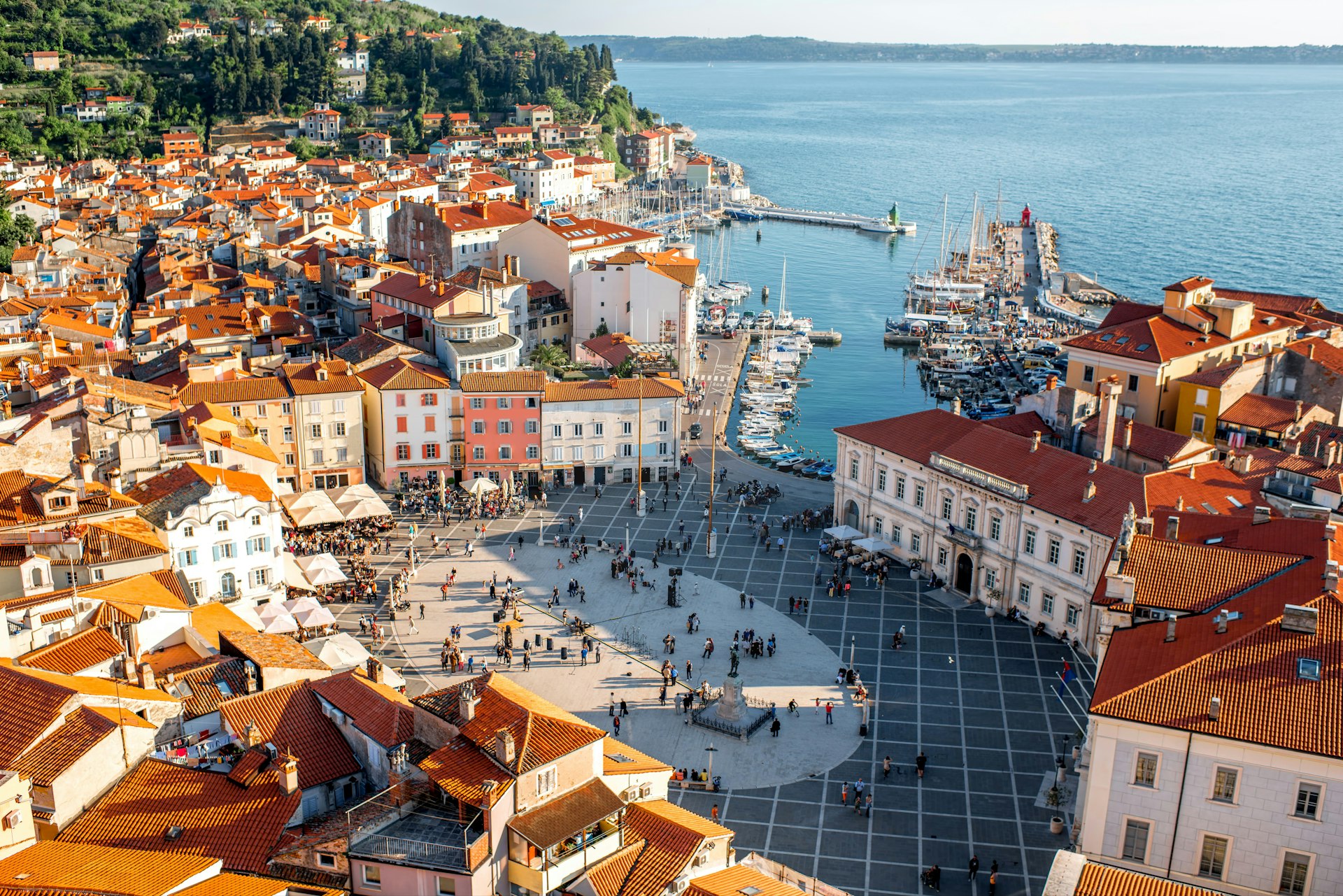
Soak up the sun in Piran
Such is the bounty of Slovenia that you can play in the mountains in the morning and lounge on the beach in the afternoon. When that urge strikes — and it likely will — Piran is the spot to soak up the rays, splash in the Adriatic and discover a unique destination on the country’s 47km (29.2 miles) of coastline.
Often called the most beautiful town along Slovenia’s Adriatic shore, Piran predates the Romans, but it got its present look during the Middle Ages, when it was part of the Venetian Empire. Get a panoramic overview of this intoxicating town by climbing the 147 stairs to the top of the bell tower, located next to the 17th-century baroque Cathedral of St George. From here, you can see three countries.
Come down from your perch to Tartinijev Trg (Tartini Square), the nerve center of town before heading to the Mediadom Pyrhani, 150m (492ft) away, to get a multimedia take on Piran history. Don't forget the reason you’ve raced down here from the mountains: A 15-minute walk takes you to Fiesa Beach for your plunge into the sea.
Explore esoteric interests in the Karst Region
The Karst Region, which takes its name from its porous, limestone topography, acts as a synapse between Slovenia’s northern alpine delights and the Adriatic coast in the southwest. This compact area produces outstanding prosciutto, cheese and wines – such as the ones from Čotar Vineyard in the town of Komen – as well as unexpected pleasures both above and below ground.
In the town of Lipica, take a tour of the Lipizzaner stud farm, where the famous white horses have been bred for more than four centuries. Then take a deep subterranean dive into the Škocjan Caves, a Unesco World Heritage site with some 6km (3.7 miles) of tunnels, passages and chambers filled with enough stalagmites and stalactites to excite any spelunker.

Drink wine in Goriska Brda
Straddling the Italian border, Goriška brda (or simply “Brda”) has been a driving force in Slovenia’s growing reputation as a top wine destination. From one of the many perched villages scattered across the fertile hillsides, you’ll see a seemingly endless expanse of vineyards disappearing over the horizon. A visit here, however, is about more than just observation. To understand the passion brought to every bottle, you’ve got to fill your glass with the area’s liquid gold.
Start in the village of Dobrovo with a tour of the cellars at Klet Brda wine cooperative, where you’ll have the chance to sample 12 of its finest labels. To compare and contrast, head to Simčič Winery, in the village of Ceglo, to taste some of the country’s best vino. Make sure to ask for their Rebula, the region’s signature white variety.
Slovenia is on our 2022 Best of Travel list. For more stories from some of the world’s most exciting destinations click here.
Safety recommendations and restrictions during a pandemic can change rapidly. Lonely Planet recommends that travelers always check with local authorities for up-to-date guidance before traveling during Covid-19.
You might also like:
Slovenia's new green route is perfect for independent travelers
6 reasons to visit Slovenia, a gem at the heart of Europe
A perfect weekend in Ljubljana

